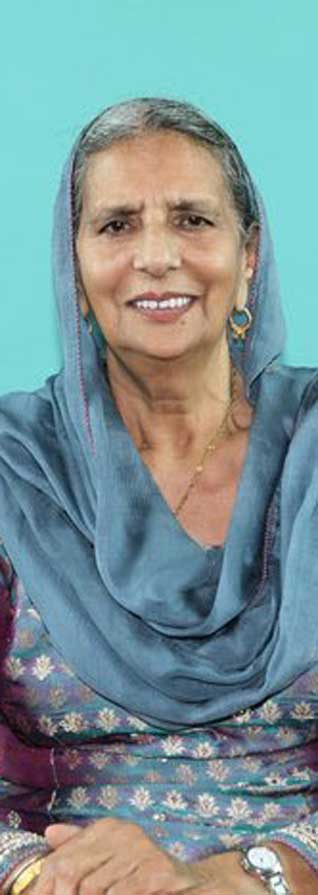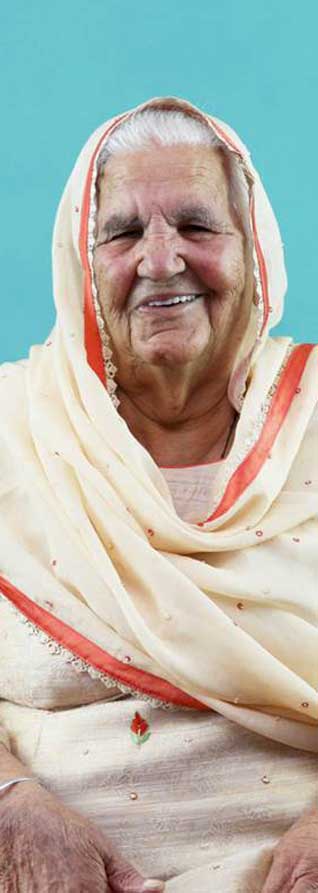People
The Kaur Project
JENNIFER CHOWDHURY
When Jessie Kaur Lehail and Saji Kaur Sahota met for the first time at a speaking event in early 2015, the two Sikh-Canadian women bonded over feminism, identity politics, and their mutual realization that many women in the community, as in other communities the world over, stood in the shadows of their fathers or husbands.
"Women make up 48 percent of the community and yet our voices are never heard," Jessie says. "There is very minimal conversation about how women have contributed to Sikh history. We're in the background for Sikh religious events."
To address the issue, the Vancouver-based pair launched ‘The Kaur Project’ in April 2015. The website is inspired by ‘The Humans of New York’ project and highlights the lives, struggles, and achievements of Sikhs in North America.
Founded in the 16th century in Punjab, Sikhism is a monotheist religion with a large focus on social justice, including gender equality. Sikh women take on the name Kaur as their middle or last name as a way to challenge the patriarchal notion of women adopting their father’s or husband's names. But over time, with cultural constraints and surrounding patriarchal practices overriding religious scripture, the feminist elements of the religion have eroded, Jessie said.
"But this is not what the founder of the religion, Guru Nanak, intended," she said.
Women who take part in The Kaur Project sit for portraits by Saji Kaur, who is a photographer, and do an interview with Jessie, who has a background in public relations and communications.
"The first question I ask each woman when we sit down for our interview and photography session is, What's your story?" Saji said.
Jessie says it's an opportunity for the women to become visible and to tell stories they don't often share.
"No one asks them how they see themselves as Kaurs or about their journeys as Sikh women," she said.
The women discuss how Sikhism has helped them navigate their lives from their careers, families, mental health, and body image, among other subjects. Jessie and Saji said they also extract the woman's struggles, as well.
"So many of the women have shared their stories with abuse, their relationship with the religion and spirituality," Saji said.
Trust is an integral part of the community of women The Kaur Project is building. Jessie and Saji said they are very deliberate about how they conduct the interviews and what kind of information they reveal.
"When they share painful things and private things we have to make sure that they're comfortable with what we're sharing," Jessie said. "It should empower their lives, not endanger themselves at any point, so we don't include information about their families, jobs or spouses."
The Kaur Project is meant to be a form of therapy for the women that are profiled, according to Jessie and Saji. The pair understands the need for a space like that due to their own early experiences with racism and misogyny.
"I never realized I was different until I was bullied by other kids," Jessie said. "When I was eight years old, my cousin and I were walking to the gurdwara across the street from our house and we were chased by Caucasian girls who wanted to light our hair on fire."
Jessie said that The Kaur Project showcases the multi-layered identities of being Kaur women.
"The otherness is what we're addressing, she said. "We no longer feel like we're just South Asian or Sikh. We can harness all these identities and vividly showcase our identities. If we wait for the status quo to make that happen, it never will."
[Courtesy: NBC News. Edited for sikhchic.com]
February 16, 2017
Conversation about this article
1: Sangat Singh (Kuala Lumpur, Malaysia), February 17, 2017, 11:05 AM.
It's been some 312 years since the movement began. It was started by Mai Bhago when she shamed Bhai Mahn Singh of the Forty Mukthas. This was during the long drawn siege of Anandpur. The enemy sent a message that if they abandoned the fort and carried a white flag they would be allowed to leave unharmed. Tired and hungry, those 40 wrote a ‘bedava’ and begged Guru Gobind Singh that they be allowed to leave. When Mai Bhago heard about it, she was livid. She drew her sword and told the Forty to wear ‘ghagray’ (skirts) and to never show their faces again. Thus shamed, they followed her ... into battle. All the Forty were thus martyred. Guru Gobind Singh saw the leader Bhai Mahn Singh still on his last breath. Guru Sahib put the warrior's head on His lap in blessing. Bhai Mahn Singh’s request to Guru Sahib was: “Please tear up that note (bedava). They live in our daily ardaas to this day.




